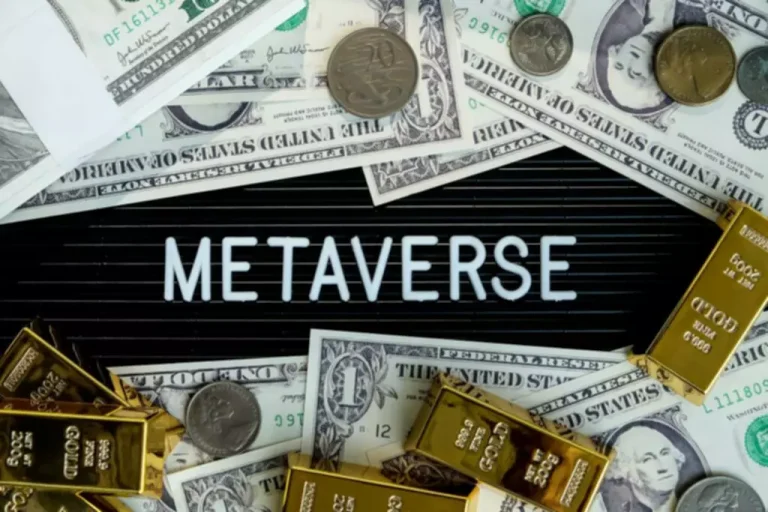In some situations, transaction monitoring systems may not have all parts of data offered on a scheduled basis. Missing data might mean the distinction between figuring out a case of money laundering or failing to flag it. Understanding where to identify further data within present systems, and combine it into their investigation processes is a key AML analyst function. Supervised learning is generally preferable when information with known outcome/labels are available. For AML that’s problematic as, in contrast to different types of financial fraud, a financial establishment rarely finds out if a cash laundering suspect is actually responsible of crime. We can, nonetheless, get around this problem by modelling “suspicious” behaviour as a substitute of precise money laundering.

We observe variety of concerned nationalities in cash laundering networks indicating the internationalization of money laundering activities. International cooperation has always been an important factor in the fight towards money laundering and there’s no sign that it will change within the foreseeable future. Network analytics compliments present machine studying and fuzzy logic-based approaches that many banks use for AML monitoring. Network statistics (for instance aml risk assessment, connectivity) for each customer can be utilized as an input to improve the accuracy of customer risk score or transaction monitoring models. Fuzzy logic-based approaches that resolve customer identities can be improved by taking a look at how carefully accounts are connected. In addition to enhancing the effectiveness of current strategies, network analytics offers investigators with new capabilities.
Can Interpret New Compliance Requirements
In addition, we have the complete transaction history for all accounts the events have access to, two months back in time. In the current setting, alerts that pertain to the identical get together are merged right into a single case in the case stage (Figure 1). Throughout this paper, we refer to each transaction as having a sending and a receiving celebration. These are the people or firms that management the sending and receiving accounts.

Anti-money laundering regulations have had an impression on governments, financial institutions, and even individuals around the globe. Automation and standardization of critical portions of the due diligence and investigation processes could make skilled staff more practical and considerably scale back their caseload. Robots can be used to automate certain actions, together with the inhabitants of case files for investigators, the closing of level-one alerts, and the inhabitants of SAR types.
1 Predictive Modelling For Reporting
Anti-money laundering is carefully associated to counter-financing of terrorism (CFT), which financial establishments use to combat terrorist financing. AML laws combine cash laundering (source of funds) with terrorism financing (destination of funds). The United States was one of many first nations to enact anti-money laundering legislation when it established the Bank Secrecy Act (BSA) in 1970. An early effort to detect and prevent cash laundering, the BSA has since been amended and strengthened by extra anti-money laundering legal guidelines.
- Throughout the account’s lifetime, monetary institutions must conduct customer due diligence (CDD)—the apply of maintaining accurate and up-to-date data of transactions and customer information for regulatory compliance and potential investigations.
- By default, this leads to gaps within the dataset where no criminal exercise happens for the jailed particular person whereas serving their sentence.
- This kind of tool routinely gathers info through on-line searches, internal data, and third-party databases, and highlights concerns such as relevant sanctions, negative media, and political exposure.
- This helps to ensure that all business-as-usual actions and ongoing regulatory actions are considered.
- Sorting the ‘respectable’ transactions from the ‘dangerous’ is normally a major problem for financial firms, which is why investment within the technology required to assist AML analysts is the key to environment friendly and effective detection and investigation.
When anti-money laundering insurance policies intensify, we might expect that the felony networks to which skilled launderers join start competing with one another more. This can manifest in increased betweenness of money launderers and a decrease within the transitivity index. Besides the amount of money being laundered and the significance of this problem, another strand of analysis aims at detecting laundering actions. For occasion, some applied analysis uses machine learning throughout the banking system to detect potential money laundering activities [34].
Worldwide Anti-money Laundering
The ROC curve shows which true constructive fee (TPR) corresponds to which false positive fee (FPR) when assigning Class 1 to all predictions above a threshold τ, while shifting τ from 1 to zero. It takes the worth zero.5 for fully random predictions and 1 for perfect predictions. As the AUC relies solely on the rating of the predictions, it penalises only for refinement relative to other predictions and is ignorant to calibration of the predictions. Thus, it is a higher measure when the predicted chances themselves are not of curiosity. In the us, cryptocurrencies are largely an unregulated market, and few regulations explicitly target the asset class by name. Instead, AML enforcement actions, similar to those against crypto exchanges Binance and FTX, have been prosecuted underneath present laws and statutes, such because the Bank Secrecy Act and the Foreign Corrupt Practices Act (FCPA).

The key to impression is with the flexibility to deploy analytics and know-how in a business-specific way and to embed them organically into enterprise processes, which in flip typically need to be basically reshaped to reap the advantages of new instruments. Ultimately, gathering multiple views and aligning on the vision, design, and trade-offs for using ML improves transparency across the enterprise while uncovering and decreasing dangers. The value proposition is tied to enhancing effectiveness by better https://www.xcritical.in/ capturing the risk and producing high-quality alerts for downstream investigation—efficiency, due to this fact, follows effectiveness. These (sometimes inferred) hyperlinks could be inside information, such as account transfers or joint possession, or exterior knowledge, similar to a shared handle or frequent use of the same ATM. Recent estimates show that roughly $800 billion to $2 trillion is laundered yearly by way of the worldwide banking system.
Community And Cluster Analysis
For the representation of diversity in concerned countries (measured by nationality), cash laundering clusters are more diverse although felony clusters that don’t have any detected money laundering activities are catching up. Representation was much less proportional for cash laundering clusters but a decrease in dis-proportionality around the announcement of AML-IV is observable for criminal networks with and without money laundering activities. In general, AML policies are often accused of having high costs however not many seen advantages [4–6]. Studies about AML effectiveness typically try to look whether or not cash laundering decreases and use dark quantity estimation techniques with their accuracy being questionable, as nicely as the usefulness of the gained data [7]. The method offered on this paper doesn’t use such dark numbers estimations however relies on prime quality administrative data instead.

Anti-money laundering is a world web of legal guidelines, laws, and procedures aimed at uncovering cash that has been disguised as respectable earnings. For centuries, governments and law enforcement agencies have tried to battle crime by following the money. As one other instance, in a typical bank, data infrastructure and methods are not properly positioned to rapidly spot the connections amongst small money deposits made by many different clients and wire transfers despatched by those clients to the identical recipient. The exhibit illustrates how a typical “smurfing” scheme works, in which cash deposits are damaged down into quantities below the reporting threshold of $10,000. For confidentiality, we stratify the true information earlier than we apply our synthetization method (we always use the label “real data” to check with the real, non-stratified data). We particularly use bootstrapping (i.e., random sampling with replacement) to ensure that the stratified knowledge accommodates (i) a 50%–50% split of female and male shoppers and (ii) a 10%–90% break up of excessive risk vs. non-high danger purchasers (from an AML perspective).
Capital markets firms are looking for methods to cut back exposure to fraud and monetary crimes. Anti-money laundering from SAS helps them detect, examine and report on illicit activity from fraud and security techniques – whereas decreasing AML expertise and investigation prices. At a Tier 2 regional US bank, SAS deployed an ensemble of AI models that enabled the financial institution to reduce alert quantity by 55% and enhance suspicious activity report (SAR) yield by 25%. Another Tier 1 international financial institution used machine studying to automate due diligence doc reviews, lowering effort from two weeks of employees time to less than a minute. The paper demonstrates that the common method of not using non-reported alerts (i.e. transactions that are investigated but not reported) within the training of the mannequin can result in sub-optimal outcomes. Our developed method outperforms the bank’s present approach when it comes to a good measure of performance.
Drug traffickers must launder cash to hide its origins, cover their identity, and forestall confiscation. Illegal drug transactions are sometimes accomplished by way of avenues like darkish internet marketplaces. Some of the techniques drug traffickers use involve bulk cash smuggling, structured deposits, and cash service companies and foreign money exchanges. Crypto/virtual currency and cash laundering Crypto and digital currencies have opened the door to new strategies of laundering funds.

Then create inferred links between customers by looking at shared addresses, employer, or social media information. Although typically the target state, an enterprise grade graph database is usually not required—data could be stored in a standard relational database to get started. Even without advanced analytics, creating this database of hyperlinks will accelerate investigations and supply information scientists with a rich asset that can be used for AML, along with a wide variety of different use cases (for example, marketing). Alternatively, the worth of a particular node property can be used, e.g. as an alternative of the type of crime binding the connections, the variety of connections (degree centrality) might better predict the availability of a mutual connection. Lawyers, political scientists, and public coverage scholars historically focus on the development, implementation and execution of anti-money laundering insurance policies, e.g. [19–21]. Economists are inclined to give consideration to analyzing the impact of cash laundering on society and estimating the amount of money being laundered, e.g. [2, 25, 26].
Community Analytics Is The Way Forward For Aml
We imagine this displays that financial institution purchasers tend to make spherical, integer transactions (say, money withdrawals of one hundred, 200, 500, or 1,000 DKK). In our synthetic knowledge, however, the distributional spikes and asymmetrical relations between credit and debit transactions are largely removed. Also, observe that the synthetic card, money, and worldwide transactions lack their left distribution tails. Traditional AML performed by a financial institution makes use of a customer’s profile and transaction history to generate risk scores and flag numerous suspicious habits, similar to cash deposits over $10,000.

